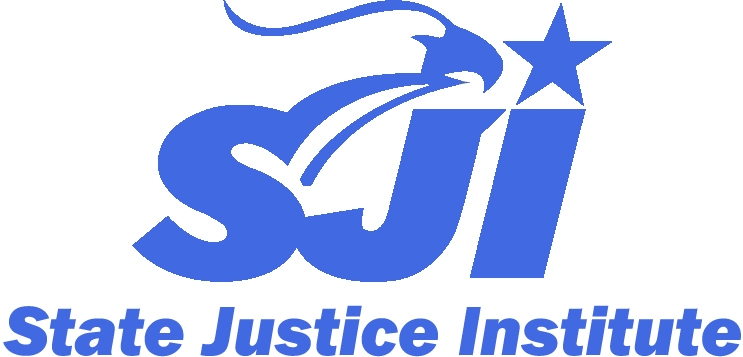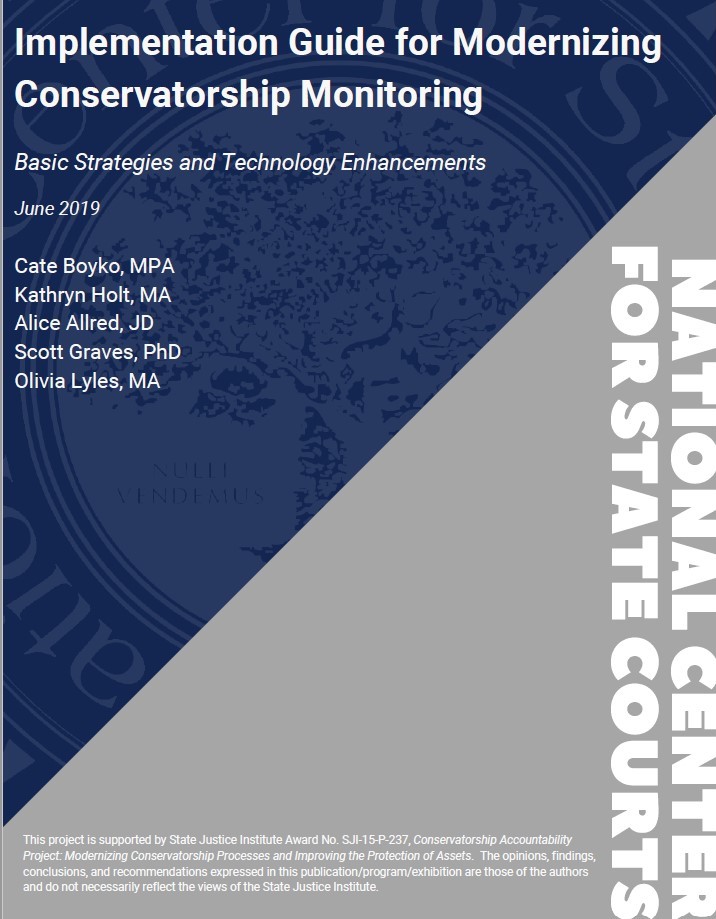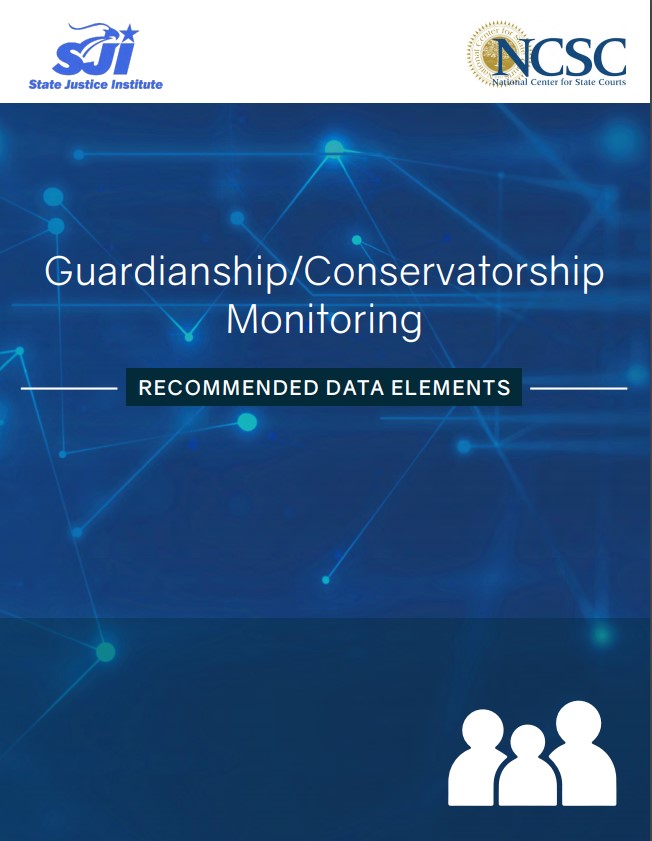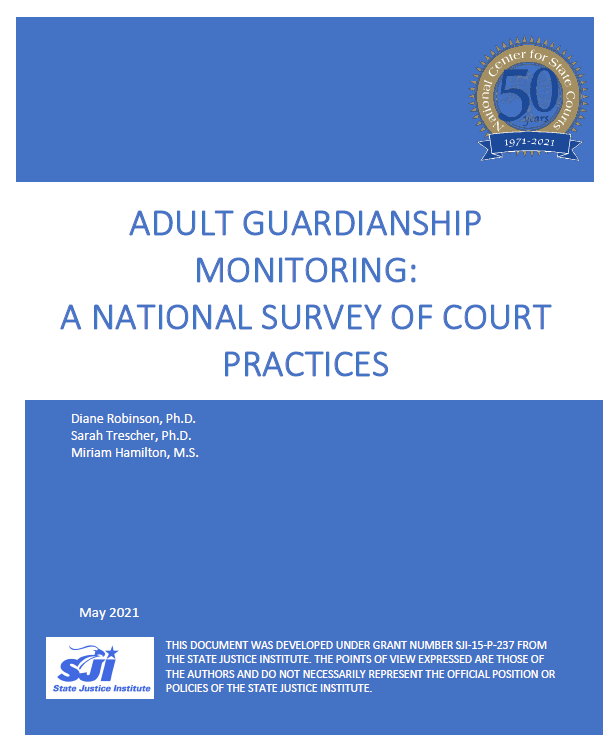The need for court reform
Effectively monitoring guardianship and conservator cases is challenging for many courts. The problems are pervasive:
- Guardianships, especially full guardianships, are often granted with too much ease.
- Guardians and conservators are often not certified and may receive little training.
- Courts lack resources and staff for effective oversight.
- Courts manage increasingly complex caseloads with limited budgets.
- Courts often lack effective case management systems to track guardianships and conservatorships.
About the project
The purposes of the Conservatorship Accountability Project (CAP)[1] [2], were to modernize conservatorship accounting and tracking processes and build safeguards to protect vulnerable adults from financial exploitation.

Specifically, CAP strove to advance tools to help courts:
- Develop and use technology to automate key functions of the conservatorship process.
- Increase monitoring of specific cases based on analytically derived risk indicators.
- Provide courts with conservatorships data standards.
- Collect information on current court monitoring practices.
Data collection efforts showed that not only do most state courts lack the capacity to develop and implement broad-scale changes, but antiquated systems create struggles with even simple tasks, such as documenting the number of active conservatorship cases and tracking compliance with reporting requirements.
Without this data, technology solutions and targeted reform cannot be applied.
Understanding these limitations, the CAP has produced two reports to help courts:
1. The Guardianship / Conservatorship Monitoring Recommended Data Elements contains data elements as well as definitions and notes.
These are consistent with the National Open Court Data Standards (NODS).
2. The Implementation Guide for Modernizing Conservatorship Monitoring* is to inform readers of the efforts and advancements underway in light of problems posed by conservatorships.
*Jump to "Seven Steps for Modernization" below.

Regardless of the current situation within a state, the proposed strategies can be adapted to assist all courts.
Modernization, including advances in technology, is the broad theme that can drive meaningful reform.
In the CAP project, two modernization components were studied:
1) The ability to replicate Minnesota’s online accounting system, MyMnConservator, in other states.
2) Implementing empirically based red-flags to identify cases with a concern of financial loss using Minnesota’s data.
The "Minnesota Model: "MyMNConservator (MMC)”
In Minnesota, conservators are required to submit an inventory to establish the assets and estate of the protected person. They are required to use mandatory conservatorship accounting software—MyMnConservator (MMC) to file the inventory, as well as annual accountings reporting each transaction, online. There are features in MMC that help balance accounts with bank statements and track categories of spending.
A centralized, statewide Conservator Account Auditing Program (CAAP) is utilized to audit first annual accounts and then every four years. Centralized court staff review annual accounts in between audit years. Automation in MMC places the accountings in the applicable queue for audit by CAAP or review by staff reviewers. Accounts can be referred to audits from court staff, reviewers, and judges. Auditors draft an audit report to the court summarizing audit findings and recommendations (see Appendix B, Modernizing Conservatorship Guide for more information on audit levels).
The local court has the discretion to call for a judicial hearing when necessary to address the audit report. In cases where there is a documented loss due to conservator behavior or unethical actions, the most common judicial responses are removing the conservator and ordering repayment of funds. An analysis of judicial responses to conservator exploitation in Minnesota can be found in this background brief.
Reform efforts in the pilot states & lessons learned
Five pilot sites embarked on the CAP project in 2016 to improve court monitoring and implement auditing solutions. The states were Indiana, Iowa, Texas, Nevada, and New Mexico, each with different resources and different stages of reform. Competing priorities and resource constraints proved too challenging for simply implementing software solutions like Minnesota’s MMC. Nevertheless, great strides were made in improving the conservatorship process. Summaries of the successes and lessons learned are detailed in the guide. Highlights include:
- New mandatory bonding requirements; separate conservator accounts with no commingling of funds; new forms; and redesigned comprehensive annual reports, with corresponding court rules changes.
- The AOC developed a standard operating procedure to docket and track when initial and annual reports are due.
- Development of a pilot project with the State Auditor to audit annual conservatorship reports externally.
- A task force released a report calling for statutory changes to require a financial management plan to be filed in addition to inventories and accountings.
- A steering committee was formed to guide the development and rollout of a monitoring software solution, similar to MMC. However, technical and budget constraints prevented a simple adaption of the MMC code.
- Indiana developed a Guardianship Registry application to provide uniform data regarding guardianship and conservatorship cases in a state without a unified case management system. This system is accessible by the public, including hospitals and banks.
- Assisting with oversight efforts, the registry also tracks important data for courts, such as the number and type of guardianship cases filed in each jurisdiction, and notifies courts if mandatory filings are not received.
- A monitoring application “MyIndianaAccounting” (MyINA)” to track all inventories and accountings for permanent guardianship cases, including built-in “red flags” to indicate financial mismanagement or exploitation, is in development.
- A dedicated Guardianship Compliance Division was created in Clark County in 2015 to monitor compliance including reviewing inventories and annual accountings. The division was enhanced in 2019 with the hiring of a team of three minor guardianship investigators.
- Clark County has improved case compliance by utilizing daily tracking reports to send compliance notices regarding overdue filings.
- In November 2015, the OCA initiated the Guardianship Compliance Project (GCP), resulting in a comprehensive review of guardianship cases throughout the state to identify reporting deficiencies and to assist the courts with implementing best practices. Overall, 41% of cases reviewed were found to be out of compliance with reporting requirements, and in 4,548 of the cases reviewed as of October 2020, the person subject to guardianship was deceased without the court’s knowledge.
- Beginning in 2018, all guardianships in Texas were required to be registered by the Judicial Branch Certification Commission, which includes completing an online comprehensive guardianship training component and submitting a criminal background check requirement.
- The OCA is developing an online reporting and monitoring system, similar to Minnesota’s, for guardians to submit their statutorily required annual reports and accountings.
- Texas formed a Guardianship Abuse, Fraud, and Exploitation Deterrence Program in 2019 to provide assistance to Texas Courts. This program includes guardianship compliance specialists to review guardianship files and audit accountings.
Development and testing of “red flags”
CAP aimed to develop, test, and validate a set of empirically-based “red flags” that are indicative of financial mismanagement or exploitation of the assets of adults placed under a conservatorship. This was accomplished through statistical analyses of the Minnesota data (hundreds of variables, thousands of data points).
Ten preliminary risk indicators were discovered that could predict the need for a top-level audit in Minnesota, including vehicle, clothing, dining out, hobby and grocery expenses, round transactions, and the number of bank accounts.
However, when applied to new cases, these risk indicators were not able to statistically differentiate the need for a top-level audit from the other levels. Therefore, the 10 indicators were not recommended to be programmed into MMC or other state systems. Multiple reasons exist for why NCSC was unsuccessful in operationalizing empirically-based red flags, however, CAP supports further work in this area. Applying banking industry techniques and machine learning to predict financial behavior in conservatorship cases is the future of reform.
Survey of court monitoring of guardianships
Monitoring guardianships and conservatorships is central to the role of the court and is essential to ensure that the changing needs of the individual are met. NCSC surveyed guardians and judges regarding local practices to examine areas of progress and areas of continuing need, as perceived by individuals directly involved in guardianships and conservatorships. Administered in 2020, this survey was based on prior surveys of guardianship monitoring and included questions regarding the collection of the CAP data elements.
Findings in Adult Guardianship Monitoring: A National Survey of Court Practices (2021 Report) include the following:
- Guardianship monitoring practices continue to show wide variation.
- Judges and court administrators viewed the court’s role as more active and engaged than survey respondents as a whole.
- The need for improved data collections remains high, as even seemingly basic data elements, such as date of birth, are not routinely captured.
- Visits to individuals under guardianship are not routine in many jurisdictions.
- Adequate funding for monitoring guardianships remains a critical need. Only 20% of judges, and 11% of respondents overall, indicated that sufficient resources were available.
- Most courts do not reassess the need for the guardianship or conservatorship on a regular basis
Seven steps for modernization
- Obtain data on the number of assets under the courts’ watch to assist in building interest and attention.
- Consider current administrative rules or statutes and what updates or changes would be needed.
- Determine authority to make policy decisions (e.g., mandatory electronic filing, choosing pilot sites).
Examples & Resources:
- MyMNConservator (MMC) has been recognized both domestically and internationally as a model program – a result of the leadership of Minnesota’s State Court Administrator, who valued the work and prioritized resources.
- The strong support of the Texas Supreme Court and AOC was a driving factor in extensive guardianship reform in Texas.
- New Mexico’s Guardianship Reform Implementation Steering Committee, made up of all three branches of government, was able to create an MOU with the Office of the State Auditor to audit annual conservatorship reports.
- Identify relevant stakeholders and organizations (e.g. judges, court staff, conservators, attorneys, adult protection services, law enforcement, advocacy agencies, State Bars, the legislature, Governor’s office, etc.).
- Form or identify a committee or working group appropriate for this work.
- Review existing models for stakeholder collaboration.
- WINGS: Multiple states have established ongoing Working Interdisciplinary Network of Guardianship Stakeholders (WINGS). WINGS can drive changes in policy and practice through “collective impact”– by coordinating actions of organizations with the same goals. For more information on creating WINGS in your state see ABA’s WINGS page, which also lists state-specific WINGS group and contact information, for instance:
- Alaska WINGS
- Florida WINGS
- Indiana WINGS
- Oregon WINGS
- Utah WINGS
Examples & Resources:
Many courts do not have a process to monitor cases and take action when a conservator does not comply with court orders. Antiquated case management systems are a barrier to accurately tracking guardianship and conservatorship cases that are set for review (all active guardianships post appointment). States with decentralized court structures and antiquated case management systems have particular difficulty.
- Identify open/set for review/closed cases through file review.
- Open: a petition is pending
- Set for review: no petition is pending but the conservatorship / guardianship is active
- Closed: The conservatorship/guardianship is no longer active
- Assess and document cases out of compliance with reporting requirements.
- Establish a system for review - automated if possible - to track and provide notices of key events.
Examples & Resources:
- The Texas Guardianship Compliance Project reviewed cases and, as of the 2019 report, found 41% of cases were out of compliance with missing reports. See their Audit Data Collection Template (automatic download).
- Nevada’s Guardianship Compliance Office supports the efforts of the district courts to track cases and manage compliance.
- Identify information that will assist in the management and review of cases.
- Identify a mechanism to indicate active cases, such as “set for review."
- Be sure each jurisdiction has appropriate technology to capture the required information.
- Create standard definitions and a data dictionary.
- Consider using an automated reminder system (text /email) for key events.
- Establish a response procedure for when conservators are non-compliant.
Examples & Resources:
- Guardianship/Conservatorship Monitoring Recommended Data Elements
- Minnesota has court administrative processes that outline the procedures for monitoring report filing
- External case management systems, such as Indiana’s and Texas’ registry system.
- New Mexico’s Odyssey case management system automatically updates case status and uses a “tickler system” to docket the Due Date when reports or reviews are due.
- Identify a project management approach or project manager for software design.
- Ensure IT staffing/support.
- Identify business needs that technology will meet.
- Consider integration with other key systems (e.g., case management system, e-filing, other databases).
Examples & Resources:
Implementing code designed for the statutory requirements and processes of a specific jurisdiction has proven to be difficult to share with other jurisdictions. Texas reviewed the MyMNConservator code, determined it was not feasible to use, and built their own online filing system. Indiana, however, was able to adapt Minnesota’s code.
The following resources provide background and technical information on MyMNConservator (MMC) to help you determine if a similar program can be implemented in your state.
- The origins and development of MyMNConservator (MMC) are outlined in this paper, which includes screenshots of the program.
- Technical requirements, including a description of system architecture, can be found here.
- The Minnesota Judicial Branch is offering the MMC source code to interested state courts at no charge (see Software Usage Agreement).
- For more information and to submit the software usage agreement, contact Minnesota’s Conservatorship Account Auditing Program (CAAP) Program Manager, Jamie Majerus.
- Pennsylvania Guardianship Tracking System
- Identify staff and process for the initial examination of accounts filed to ensure they are complete, accurate, and reasonable.
- Understand the difference between an account review and an audit.
- Determine what resources are available and how best to allocate them to do full audits on accountings.
- Determine alternatives, such as a volunteer program, if resources are scarce for auditing.
Examples & Resources:
- Minnesota’s Conservator Account Auditing Program (CAAP), (see Appendix B, Modernizing Conservatorship Monitoring Guide)
- Minnesota’s Conservator Account Review Program (CARP) to review the accountings between full audits
- Marion County, Indiana, and Albuquerque, New Mexico have hired auditors or lawyers to review conservator cases.
- NCSC is pilot-testing third-party financial monitoring and machine learning to identify anomalies in conservatorship accounts and send alerts to the court for review and response.
- Review and update administrative rules or statutes granting judicial authority and providing guidance for judicial responses.
- Provide judicial protocols (such as bench cards) and training.
- Consider an interdisciplinary team approach to addressing abuse, neglect, and exploitation.
Examples & Resources:
- NCSC developed an interactive Judicial Response Protocol for allegations of wrong-doing.
- Further tools and responses to consider even before a conservator is appointed can be found here, during the regular monitoring of a conservatorship here, and proactive steps to avoid complaints here.
- Travis County Probate court in Texas uses court investigators to prepare judge and petitioner before a hearing.
- New Mexico trained judges and provided a Bench Book for adult guardianship/conservatorship cases that included sample documents judges could use for various judicial scenarios.
[1] “Conservatorship” refers to the guardianship of the estate wherein the conservator is lawfully vested with the power and charged with the duty of taking care of the property of another person who is considered by the court as incapable of managing his or her own affairs (State Court Guide to Statistical Reporting, Version 2.1, updated October 9, 2015).
[2] This project is supported by State Justice Institute Award No. SJI-15-P-237, Conservatorship Accountability Project: Modernizing Conservatorship Processes and Improving the Protection of Assets. The opinions, findings, conclusions, and recommendations expressed in this publication/program/exhibition are those of the authors and do not necessarily reflect the views of the State Justice Institute.



